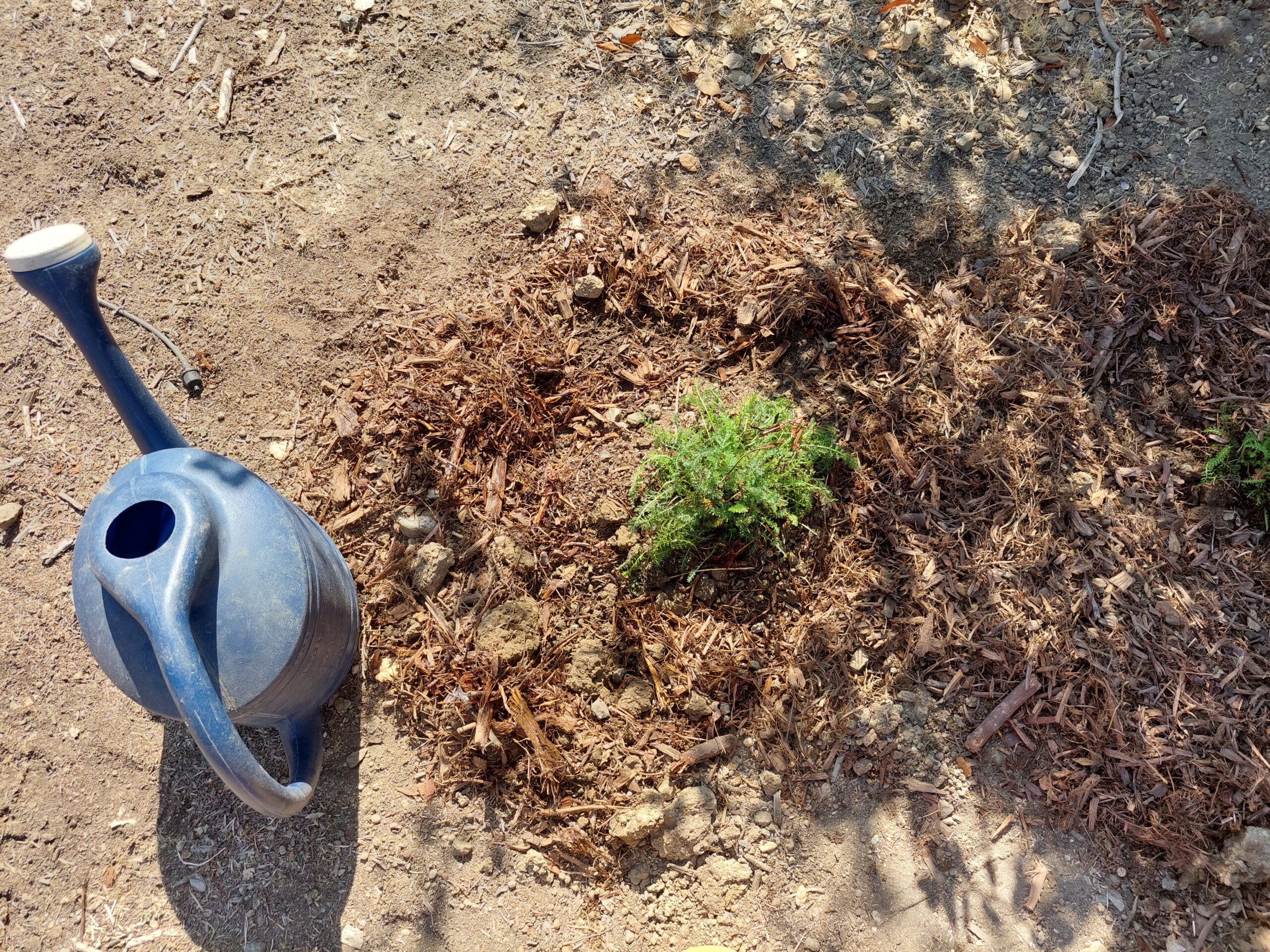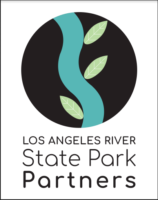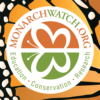BACKGROUND
Project Creator, Laura Velkei
Most solutions come out of some kind of shared experience. It could be a conversation, a spontaneous meeting, or just two friends shooting the breeze.
Fourteen months ago, Ranger Luis Rincon from CA Parks and I were chatting in front of the visitors center at LA State Historic Park (LASHP). As we were admiring the oasis LASHP had become, a lone monarch floated by. We both looked at each other wide eyed and I said, “Luis! What if we could make LASHP a hub for their migration?” We looked at each other grinning from ear to ear.
Luis and I went about our respective jobs and projects in and around the park.
A few months later I bumped into Ranger Luis again and he leaned in and whispered, “I planted some milkweed!” He pointed to an area where he had planted some milkweed and companion plants. “Okay! That’s it. We’re doing it!” And I did my happy dance. Luis laughed.
I went about formalizing the idea with the CA State Parks team and then looped in our colleagues at LA State River State Park Partners and Project Monarch LA was born.
PROJECT GOALS
Simple.
- Planting enough pollinating plants and milkweed to create the conditions for the successful reproduction of the Monarch Butterfly in our region.
- Repairing, creating and supporting new monarch habitats
- Educating local stakeholders on what is needed to re-establish biodiversity
- Getting people excited about nature.
- Getting folks to transfer their excitement into action.
- Strengthening the understanding of our role in our ecosystem.
- Sharing stories.
WHAT WE NEEDED
We needed lots of milkweed. Lots and lots of milkweed, some uber volunteers that could help plant the milkweed, an equal amount of supporting plants across the park and some good old fashioned elbow grease.
A PLACE TO LEARN
As a community and sustainability advocate, helping people learn about why nature matters is a truly joyous way to get more people engaged in reversing the effects of climate change. When we can look at a butterfly and recognize why his arrival matters, or when we nurture the growth of a native plant that brings bees and hummingbirds, we are ultimately retuning ourselves to a place of balance recognizing that all life has a crucial role and is interconnected.
This is the base philosophy of the First Peoples of Los Angeles.
FIRST PEOPLES OF LOS ANGELES are:
Gabrielino Tongva Indians of California Tribal Council, Gabrieleno/Tongva San Gabriel Band of Mission Indians, Gabrieleño Band of Mission Indians – Kizh Nation
When we use the phrase, FIRST PEOPLES, we are referring to all three tribal communities above. All of the FIRST PEOPLES tribes are the indigenous people of the Los Angeles Basin and the southern Channel Islands. While there are several other tribes who have claimed history to LA County, each of the tribal communities linked above has claimed ancestral history to LA State Historic Park and the surrounding area. Each of their stories is unique and disturbing. The treatment of FIRST PEOPLES is shameful and painful to learn, but it is harder to repeat the sins of our fathers when we learn to strive for and accept truth. Truth should never be feared or denied. It brings balance, something this project is entirely about.
We encourage you to take a moment to read about their history and their contributions to our collective consciousness. It is their philosophy of life that can help bring us back into balance.
FIRST PEOPLES OF LOS ANGELES have lived in this area for over 7,000 years.
Let me repeat…They have lived in this area for over 7,000 years.
The FIRST PEOPLES developed a deep understanding and appreciation of the natural world. Their approach to biodiversity and their understanding of nature in balance have been shaped by their long-standing relationship with the land and its ecosystems.
The FIRST PEOPLES’ approach to biodiversity is rooted in their belief that all living things are interconnected and interdependent. They see themselves as part of a larger web of life, in which each species has a unique role to play. They view the diversity of life as a precious resource that must be protected and preserved for future generations. They also understand that the health and well-being of their community is intimately tied to the health and well-being of the natural world around them.
To maintain this delicate balance, FIRST PEOPLES have developed a variety of practices and traditions that promote biodiversity and sustainability. For example, they practice selective harvesting of plants and animals, taking only what they need and leaving the rest to ensure that populations remain healthy and stable. They also use traditional ecological knowledge to understand the needs and behaviors of different species, allowing them to live in harmony with the natural world around them.
The FIRST PEOPLES practice a form of land management that involves careful observation and intervention to maintain a healthy ecosystem. They practice water management, using techniques such as irrigation and water catchment to ensure that water is used efficiently and sustainably.
The FIRST PEOPLES have a deep respect for the natural world and its rhythms. They recognize that the cycles of the seasons, the movement of the sun and the moon, and the changing tides all play a role in the health and well-being of the land and its inhabitants. They also understand that human activities can disrupt these natural rhythms, and they take great care to minimize their impact on the environment.
Their approach to biodiversity and nature in balance is a testament to their deep understanding and respect for the natural world. They recognize their well-being is intimately tied to the health of the land and its ecosystems, and they have developed a set of practices and traditions that promote biodiversity and sustainability. Their approach to the natural world serves as an inspiration for all of us to live in harmony with the environment and to protect the precious resources that sustain us all.
This Project is a small way to honor 7,000 years of wisdom and to do our part in restoring the land and its biodiversity.
We are deeply grateful to all our project partners who have opened their lands, purses, hearts, plants and support!
Together we can make a difference.
THE TEAM
Sign up and volunteer and you’ll receive a cool perk!
Registration for our Earth Day planting is going thru our Partners at California State Parks Foundation. We are grateful for their continued support.
Habitat restoration will be ongoing. We will need your help planting, spreading the word and supporting the Project. Together we can bring back our monarchs and our planet.







